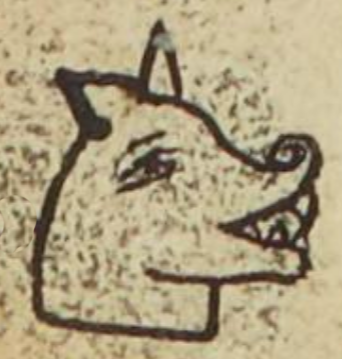Itzcuincamachallo (MH520v)
This black-line drawing of the simplex glyph for the personal name Itzcuincamachallo (here, attested as a man's name) shows the head of a dog (itzcuintli) in profile, looking toward the viewer's right. The dog's ears are upright, its visible eye is open as is its mouth, and teeth are showing. Its nose has a notable upward curl. The second part of the name, jaw (-camachalli), is present but not singled out for attention visually.
Stephanie Wood
The itzcuintli is a day sign in the calendar, but this name has an added feature, the dog's jaw. Perhaps the baby that was born and named after the day sign had a large jaw, although the portrait (of sorts, not really individualized) of the man who bears this glyph name) does not show a large jaw.
Stephanie Wood
Juao ytzcuīcamachallo
Juan Itzcuincamachallo
Stephanie Wood
1560
Stephanie Wood
dogs, perros, jaws, mandíbulas, calendarios, nombres de días, nombres de hombres

itzcuin(tli), dog, https://nahuatl.wired-humanities.org/content/itzcuintli
camachal(li), jaw, jaw bone, https://nahuatl.wired-humanities.org/content/camachalli
La Mandíbula de Perro
Stephanie Wood
Matrícula de Huexotzinco, folio 520v, World Digital Library. https://www.loc.gov/resource/gdcwdl.wdl_15282/?sp=120&st=image
This manuscript is hosted by the Library of Congress and the World Digital Library; used here with the Creative Commons, “Attribution-NonCommercial-ShareAlike 3.0 License” (CC-BY-NC-SAq 3.0).





